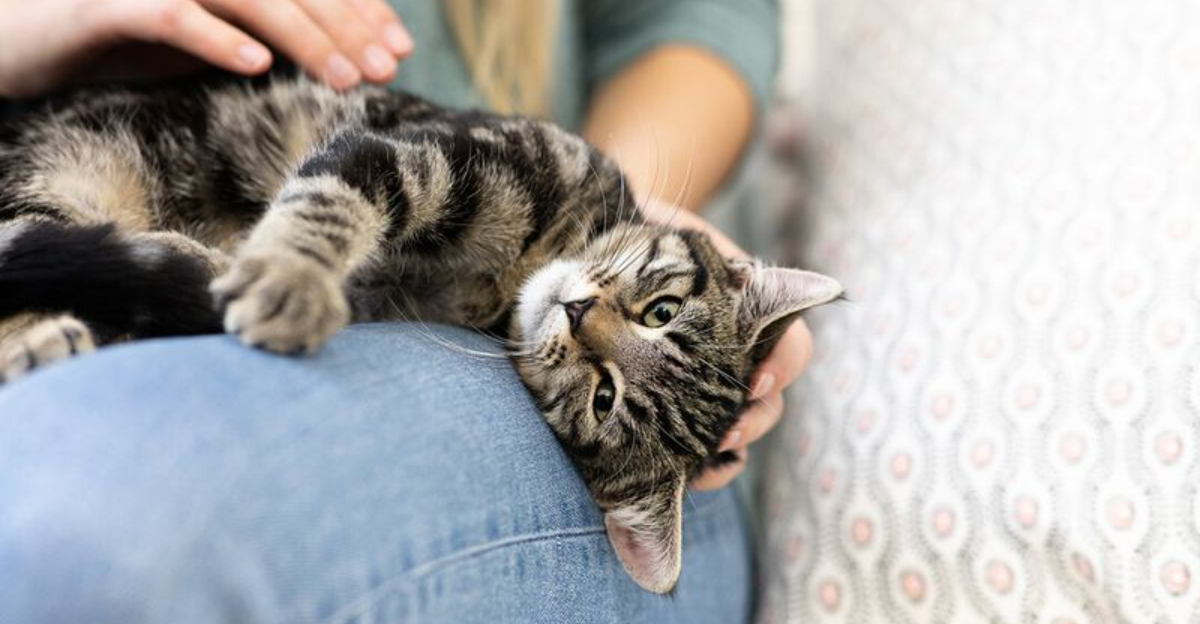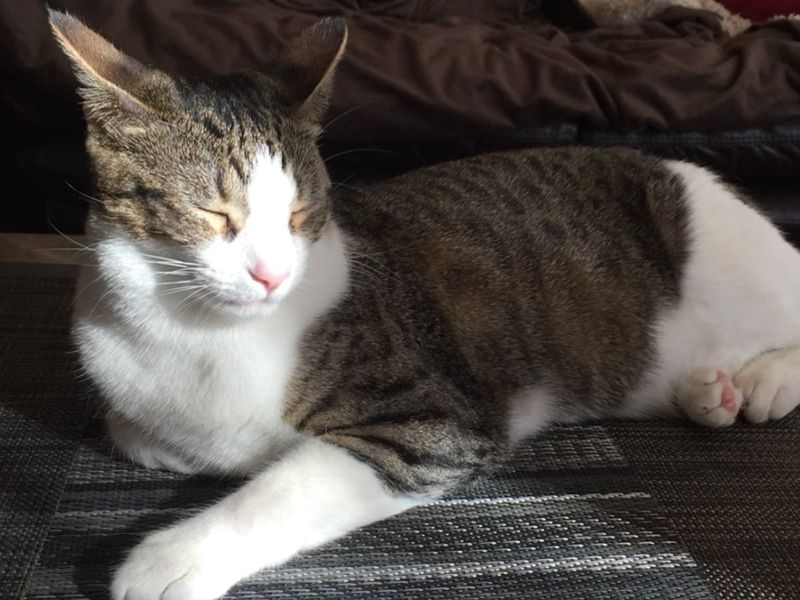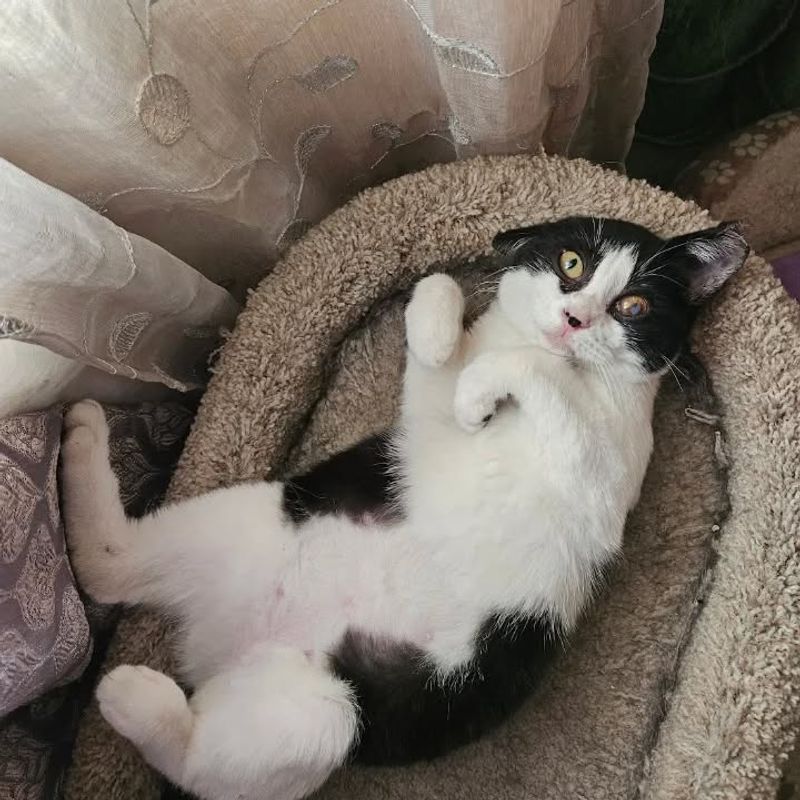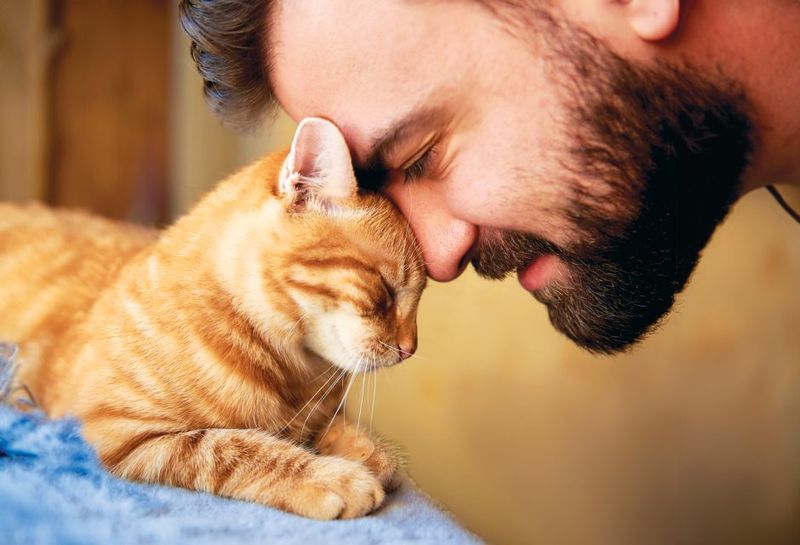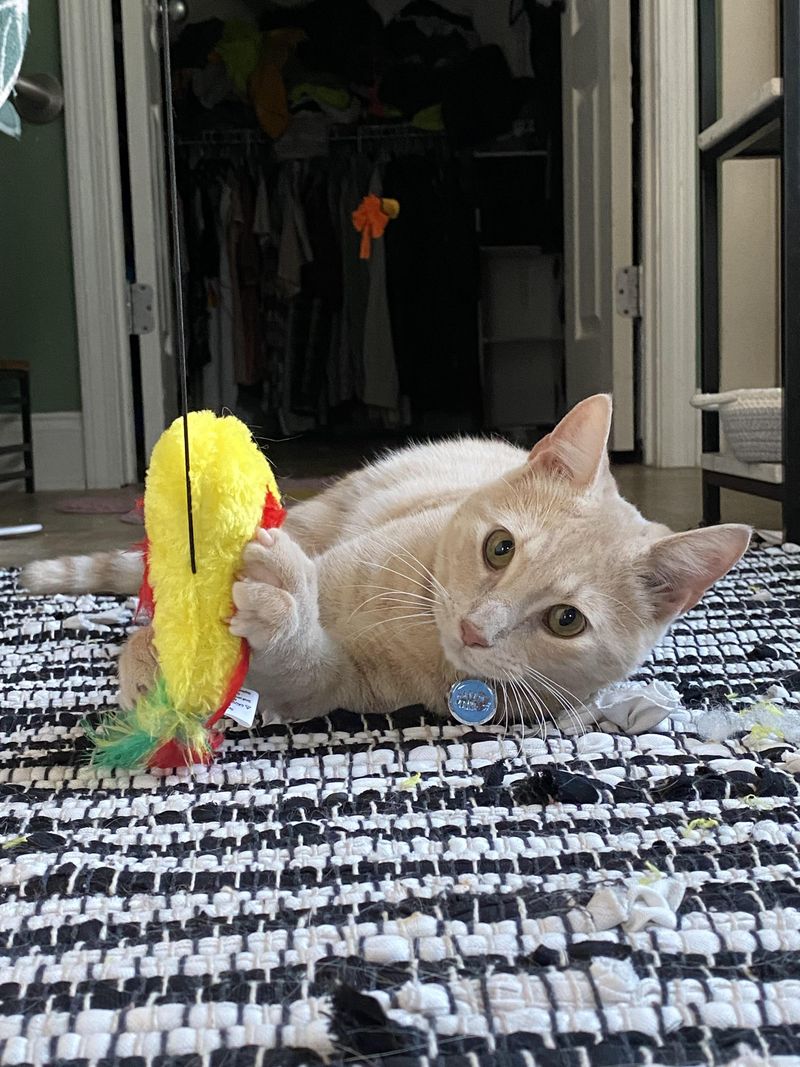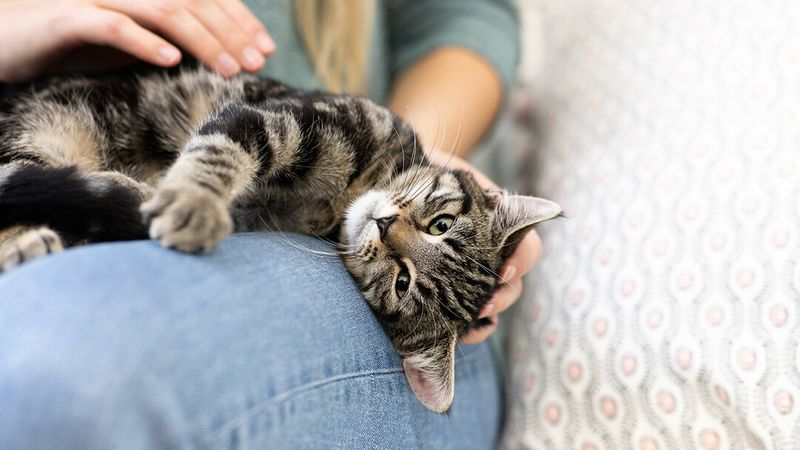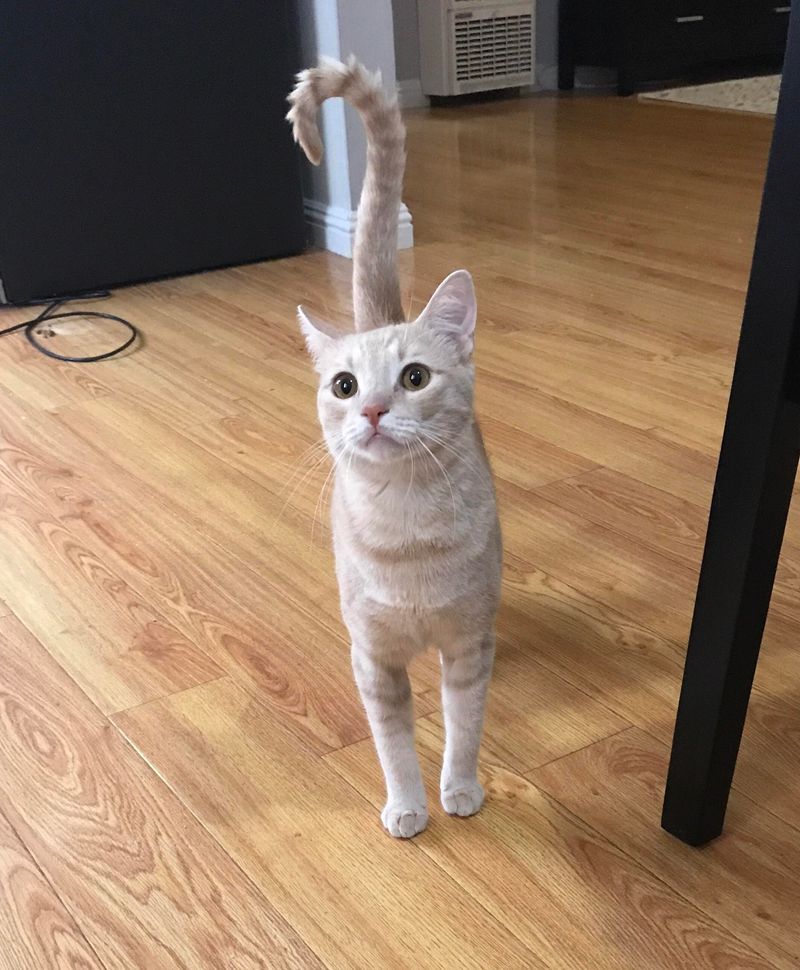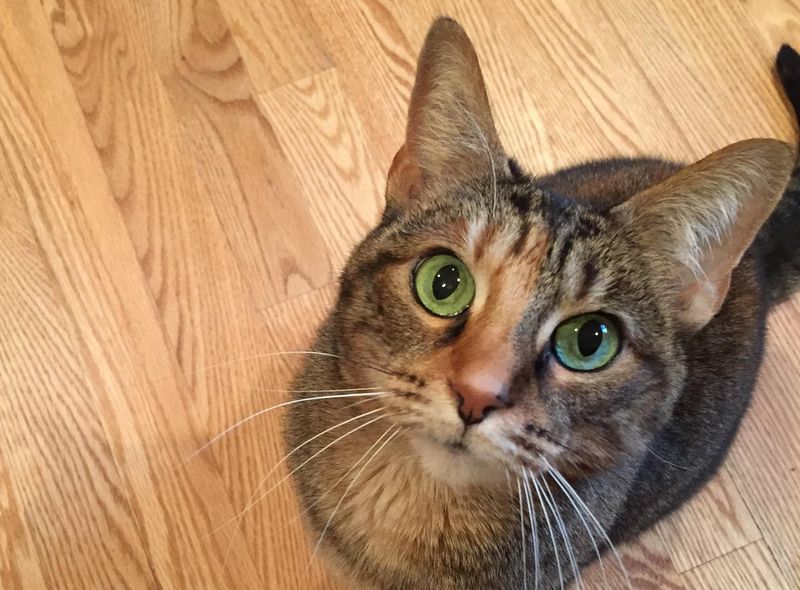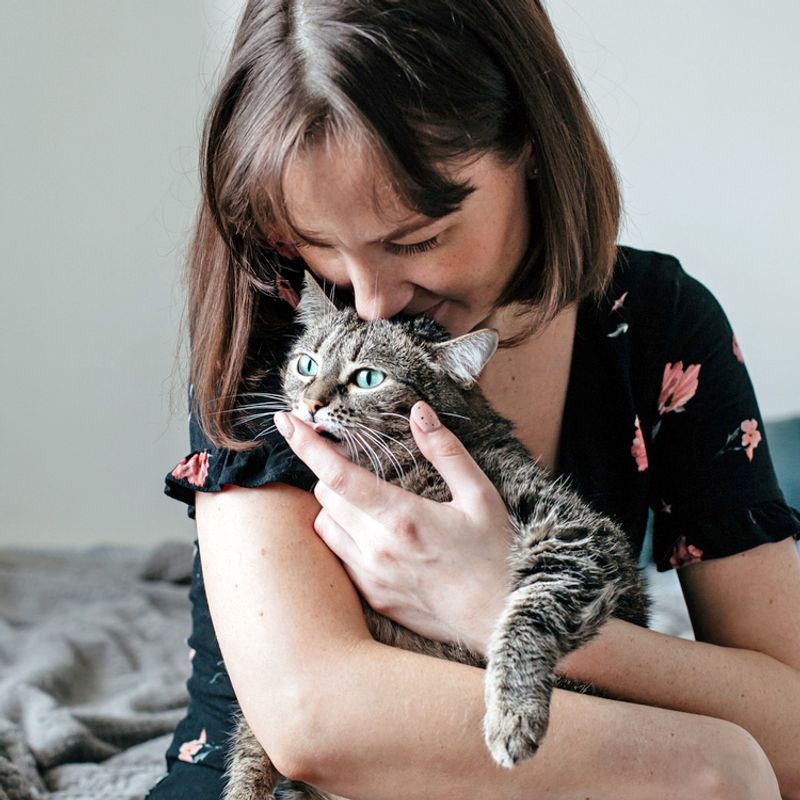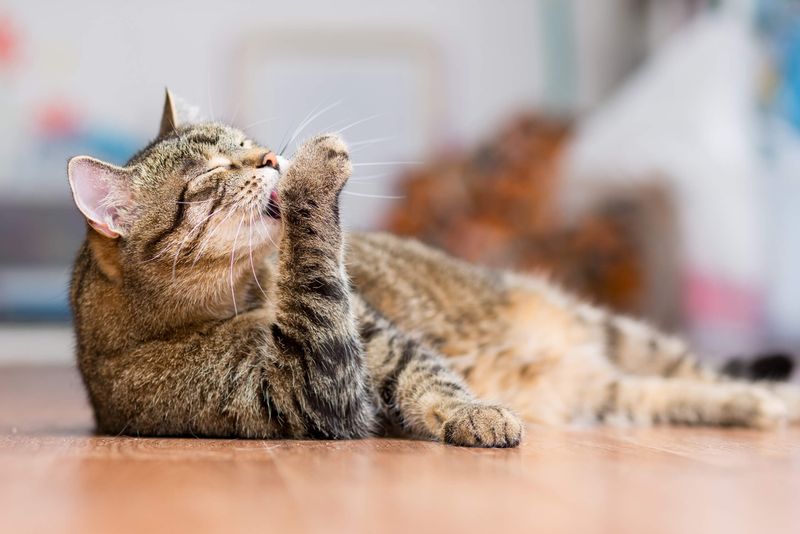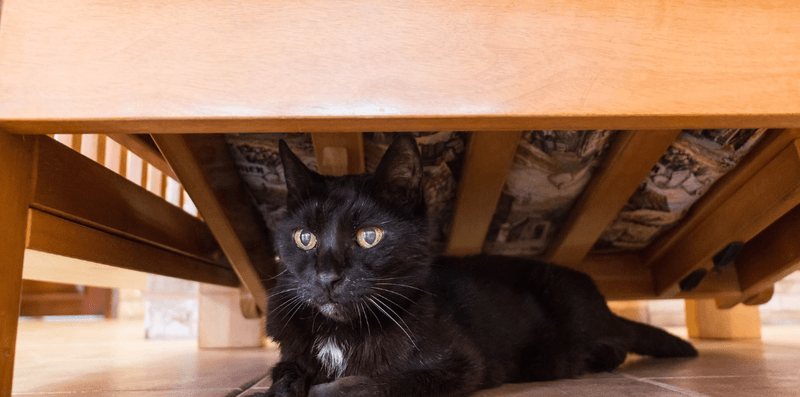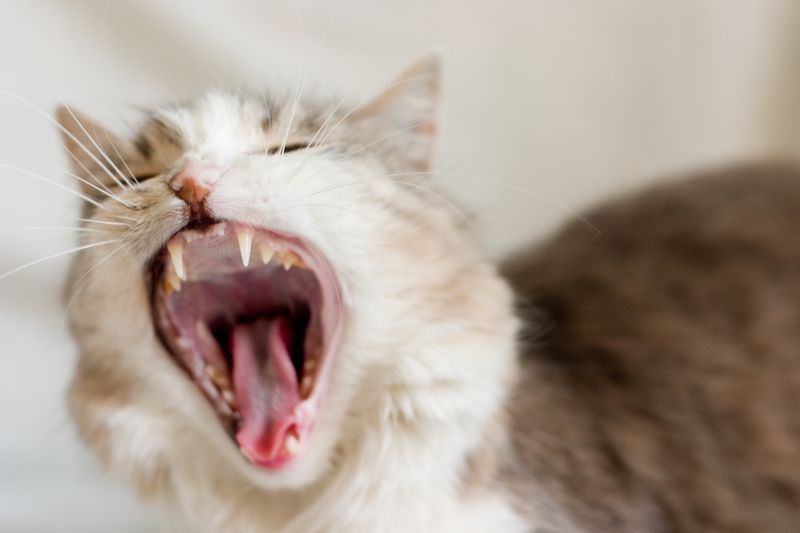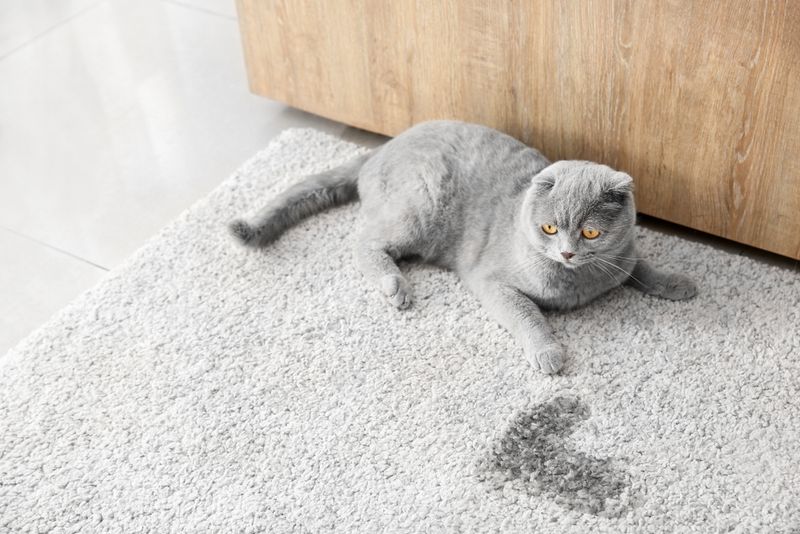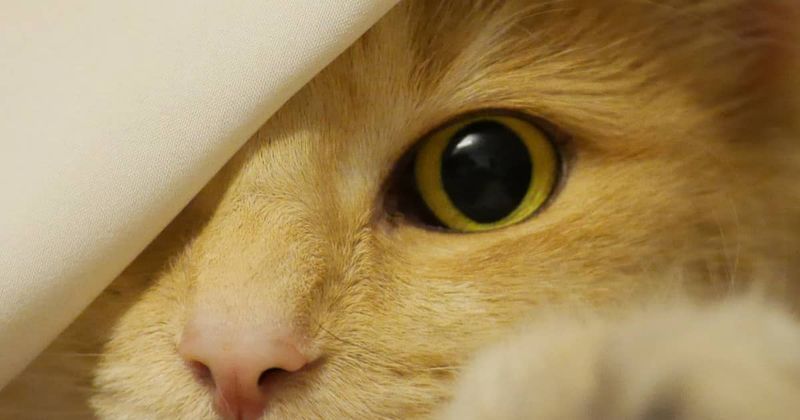📖 Table of Content:
- 1. Slow Blinks During Cuddle Time
- 2. Belly Exposure During Relaxation
- 3. Headbutts and Cheek Rubs
- 4. Bringing You “Gifts”
- 5. Kneading Your Lap
- 6. Sleeping Near Your Face
- 7. Following You to the Bathroom
- 8. Tail Position: Upright with Slight Curve
- 9. Purring While Making Eye Contact
- 10. Grooming You (Licking Your Hand or Hair)
- 1. Excessive Grooming or Fur Loss
- 2. Hiding More Than Usual
- 3. Increased Vocalization at Odd Hours
- 4. Inappropriate Elimination Outside the Litter Box
- 5. Dilated Pupils in Normal Lighting
Cats express themselves through quiet, nuanced gestures that often go unnoticed. Unlike more vocal or demonstrative animals, their emotions are hidden in small movements and subtle changes in behavior. Paying attention to these cues reveals a deeper understanding of their inner world.
A flick of the tail, a slow blink, or a hesitant step can all signal how a cat feels in the moment. Some behaviors reflect comfort and growing trust, while others hint at lingering anxiety or uncertainty. Noticing the difference can make all the difference in the relationship.
Every interaction offers insight into a cat’s emotional state. Recognizing when a cat feels safe—and when it doesn’t—helps create an environment where it can truly thrive. Respecting their signals builds confidence, comfort, and lasting connection.
1. Slow Blinks During Cuddle Time
Cat lovers often call this the “kitty kiss.” When your cat looks at you and deliberately closes her eyes slowly, she’s showing incredible vulnerability. In the wild, closing eyes means letting down defenses – something cats only do when they feel completely safe.
Many felines reserve these special blinks for their favorite humans. Try initiating this silent conversation yourself! Make eye contact with your cat and slowly close your eyes. If she responds with her own slow blink, congratulations – she’s sending kitty love signals your way.
2. Belly Exposure During Relaxation
Rolling over and showing that fuzzy tummy is one of the biggest compliments your cat can give you. The belly area contains vital organs and represents a vulnerable spot for cats in the wild. When your feline friend flops over and exposes this area, she’s essentially saying, “I feel safe enough around you to be completely defenseless.”
Caution: This isn’t always an invitation for belly rubs! Some cats enjoy tummy touches, while others might react defensively. Watch for other relaxed body language before attempting a gentle pet.
3. Headbutts and Cheek Rubs
Those gentle bonks against your leg or face aren’t accidental – they’re purposeful acts of affection! Cats have scent glands located on their cheeks, chin, and forehead. When your kitty rubs these areas against you, she’s actually marking you as part of her territory.
Far from claiming ownership negatively, this behavior means your cat considers you part of her safe inner circle. She’s essentially labeling you with her scent to create a unified family smell. Next time your cat headbutts you, take it as the compliment it truly is.
4. Bringing You “Gifts”
Finding a toy mouse or – more alarmingly – an actual dead critter on your doorstep might seem like a strange way to show love. Yet when your cat brings you these presents, she’s demonstrating profound trust. In feline society, teaching hunting skills and sharing food are nurturing behaviors usually reserved for family.
Your cat views you as someone worth providing for! While the half-eaten mouse might not thrill you, respond with gentle praise rather than scolding. Your kitty is simply showing you the ultimate sign of inclusion in her world by sharing her hunting success.
5. Kneading Your Lap
Those rhythmic paw pushes against your lap might be slightly uncomfortable (especially with sharp claws!), but they represent deep contentment. Kneading behavior starts in kittenhood when nursing stimulates milk flow from mother cats. When adult cats continue this behavior, they’re expressing comfort comparable to their earliest feelings of security.
Your cat is essentially saying, “You make me feel as safe as my mother did.” This behavior often pairs with purring and half-closed eyes – the trifecta of feline happiness! Consider keeping a small blanket nearby to protect your legs while still allowing this sweet bonding ritual.
6. Sleeping Near Your Face
Your cat’s choice to snooze near your head isn’t just about stealing your pillow’s warmth. This sleeping position demonstrates remarkable trust since cats naturally prefer elevated spots where they can watch for threats. By sleeping near your face, your cat is essentially surrendering her vigilance and relying on your protection.
This vulnerable position also allows her to catch your scent and feel your breath – both reassuring sensations. The face area offers the most intimate connection possible. Even if midnight whisker tickles wake you occasionally, appreciate this powerful sign of your special bond.
7. Following You to the Bathroom
The curious habit of your cat shadowing you to the bathroom actually stems from trust and protection instincts. In the wild, cats are vulnerable while eliminating – it’s when predators might catch them off-guard. By following you, your cat is both protecting you during your “vulnerable” moment and showing she trusts you enough to be present during hers.
Many cats also appreciate the captive audience potential! The bathroom offers guaranteed one-on-one time without distractions. While it might seem invasive, this behavior actually demonstrates deep attachment and concern for your well-being.
8. Tail Position: Upright with Slight Curve
A cat’s tail works like an emotional barometer, with the upright position signaling peak confidence and contentment. When your feline approaches with her tail standing tall and slightly curved at the top (resembling a question mark), she’s expressing both happiness to see you and complete comfort in your presence.
This distinctive tail position only appears when cats feel entirely safe in their environment. The slight curve at the tip adds an extra layer of meaning – it’s the feline equivalent of a smile! Watch for this greeting when you return home; it’s one of the clearest signs your cat genuinely enjoys your company.
9. Purring While Making Eye Contact
Purring serves multiple purposes in the feline world – from self-soothing to expressing contentment. When your cat purrs while maintaining steady eye contact with you, she’s creating a special communication channel. This combination indicates not just general happiness but specific pleasure in your company.
The vibration frequency of purring actually promotes healing and reduces stress for both cats and humans! Your cat might instinctively offer this therapeutic sound when sensing you need comfort. Next time your feline friend locks eyes while rumbling away, recognize this as her version of saying, “I’m happy we’re together.”
10. Grooming You (Licking Your Hand or Hair)
When your cat begins licking your hand, arm, or even your hair, she’s engaging in allogrooming – social grooming between family members. This behavior represents the ultimate acceptance into her inner circle. Cats only groom individuals they consider part of their colony or family unit.
That sandpaper tongue might feel rough, but it’s delivering a powerful message of belonging. The behavior also serves to distribute scent among family members, creating a unified group smell. While excessive licking might indicate anxiety in some cases, occasional grooming sessions are simply your cat’s way of saying, “You’re my person.”
1. Excessive Grooming or Fur Loss
Cats normally spend up to 50% of their waking hours grooming, but when this behavior becomes obsessive, it signals distress. Overgrooming often creates bald patches or irritated skin, particularly on easily-reached areas like the belly or inner legs. This self-soothing behavior releases endorphins that temporarily calm anxious cats.
Environmental changes, new pets, or even rearranged furniture can trigger this response. The behavior might continue even after the stressor disappears as it becomes habit-forming. If you notice your cat licking until fur thins or skin becomes visible, consult your veterinarian. This behavior requires intervention before it causes physical harm.
2. Hiding More Than Usual
While occasional hiding is normal cat behavior, a sudden increase in this behavior warrants attention. Anxious cats seek small, enclosed spaces that provide security – under beds, inside closets, or behind furniture. This instinctive response helps them feel protected when overwhelmed.
Changes in routine, new household members, or even rearranged furniture can trigger this retreat behavior. Your previously social kitty becoming a permanent hide-and-seek champion suggests something in her environment feels threatening. Create accessible safe spaces with comfortable bedding and familiar scents. Gradually coax her out with treats and gentle interaction rather than forcing her from her sanctuary.
3. Increased Vocalization at Odd Hours
Cats typically meow to communicate with humans, not other cats. When your normally quiet companion suddenly becomes vocal, especially at unusual times, she’s trying to express discomfort or concern. These sounds might range from persistent meowing to yowling or crying, particularly during nighttime hours.
Anxiety-related vocalization often has a distinctive, urgent quality different from normal attention-seeking meows. Senior cats may experience cognitive changes causing disorientation and nighttime calling. Rule out medical causes first through veterinary examination. Once health issues are excluded, consider environmental stressors like schedule changes, new pets, or even neighborhood cats visible through windows.
4. Inappropriate Elimination Outside the Litter Box
Finding unwelcome surprises outside the litter box often signals feline distress rather than spitefulness. Cats naturally prefer consistent bathroom habits, so changes indicate something’s wrong. Anxiety-driven elimination typically appears on soft surfaces like beds, clothing, or rugs – items carrying your scent.
This behavior sometimes represents territorial marking when cats feel insecure. Multiple factors can trigger this response: litter box cleanliness issues, location changes, new pets, or even conflict with neighborhood cats. Start with a veterinary visit to rule out medical causes like urinary tract infections. Then address environmental stressors while thoroughly cleaning affected areas with enzymatic cleaners to prevent repeat marking.
5. Dilated Pupils in Normal Lighting
Cat eyes naturally adjust to light conditions, with pupils contracting in brightness and expanding in darkness. When you notice consistently dilated pupils in normal lighting, your cat might be experiencing the feline equivalent of an adrenaline rush. This physiological response prepares cats for fight-or-flight situations by maximizing visual information.
The technical term for these saucer-like eyes is “mydriasis.” While momentary dilation happens during play or excitement, persistent wide pupils suggest ongoing stress. Watch for accompanying body language like flattened ears, twitching tail, or crouched posture. These combined signals indicate your cat feels threatened by something in her environment that might not be obvious to human perception.
